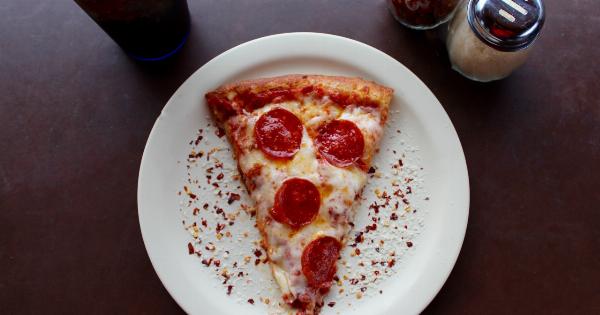Food cravings are something we all experience from time to time. Whether it’s a sudden urge for something sweet, salty, or savory, there’s no denying that feeling of wanting to indulge in our favorite treats.
But have you ever wondered why we just can’t stop eating?.
The Science Behind Food Cravings
Before we dive deeper into the subject, let’s understand why food cravings occur in the first place. Cravings are often triggered by a complex interplay of physiological, psychological, and environmental factors.
Here are a few key reasons why we experience those overpowering urges:.
The Role of Hormones
Hormones play a significant role in regulating our appetite and influencing food cravings. When we eat certain foods high in fat and sugar, our brains release dopamine, a hormone associated with pleasure and reward.
This dopamine release creates a positive association with those foods, making us want to eat them more.
Furthermore, the hormone ghrelin, commonly known as the hunger hormone, stimulates our appetite and increases food cravings. Ghrelin levels tend to rise when we are hungry or on a calorie deficit, leading to intensified cravings.
Your Gut Microbiome and Food Cravings
Research suggests that our gut microbiome, the vast community of bacteria residing in our digestive system, also influences our cravings.
The gut microbiome communicates with our brain through the vagus nerve and produces neurotransmitters that affect our mood and appetite.
Studies have shown that an imbalance in gut bacteria can lead to cravings for specific types of food.
For example, an overabundance of certain bacteria types in the gut may heighten cravings for sugary foods, while another type may drive cravings for fatty foods.
The Impact of Emotional State
Our emotional state also significantly influences food cravings. Stress, sadness, boredom, and even happiness can trigger the desire to eat certain foods.
Many people turn to comfort foods as a way of coping with negative emotions, as these foods often provide a temporary sense of pleasure or distraction.
Furthermore, emotional eating can become a learned behavior, where we associate specific foods with comfort or reward. Over time, this reinforcement leads to habitual consumption of certain foods when faced with particular emotional triggers.
The Influence of Environmental Factors
Our environment plays a crucial role in triggering food cravings. Food advertisements, enticing aromas, or even simply seeing someone else eating can make us crave certain foods.
The more we are exposed to these cues, the harder it becomes to resist the urge.
Additionally, our surroundings can shape our eating habits.
For example, if we have easy access to unhealthy snacks or live in an environment where unhealthy food options dominate, it becomes more challenging to resist cravings and make healthier choices.
Managing Food Cravings
Given the numerous factors contributing to food cravings, controlling them may seem like an uphill battle. However, there are several strategies you can incorporate into your lifestyle to help manage those irresistible desires:.
1. Eat Balanced Meals
Ensuring that you consume a well-balanced diet rich in essential nutrients can help reduce food cravings. Including an adequate amount of protein, fiber, and healthy fats in your meals helps promote satiety and stabilize blood sugar levels.
2. Stay Hydrated
Dehydration can often be mistaken for hunger and trigger unnecessary cravings. Make sure to drink enough water throughout the day to stay hydrated and ward off false cravings.
3. Practice Mindful Eating
When eating, focus on the flavors, textures, and satisfaction derived from the food. By being present in the moment and savoring each bite, you can enhance your overall eating experience and reduce the tendency to overeat or give in to cravings.
4. Find Healthy Alternatives
Instead of completely depriving yourself of your favorite treats, seek healthier alternatives. For example, if you’re craving something sweet, reach for a piece of fruit or opt for dark chocolate with a higher cocoa percentage.
These alternatives can help satisfy cravings while providing some nutritional value.
5. Manage Stress and Emotional Triggers
Implement stress-management techniques such as exercise, meditation, or engaging in hobbies you enjoy. By finding healthier ways to cope with negative emotions, you can reduce the reliance on food for comfort.
6. Plan Ahead
Avoiding temptations requires planning. Before going grocery shopping, make a list of healthy foods you want to purchase and stick to it.
By having a well-stocked kitchen with nutritious options, you are less likely to succumb to cravings for unhealthy snacks.
7. Seek Support
Discuss your struggles with food cravings with friends, family, or a healthcare professional. Sometimes, having someone to talk to and share experiences with can provide valuable insights, guidance, and accountability.
8. Get Enough Sleep
Quality sleep is essential for maintaining a healthy hormonal balance. Lack of sleep can disrupt the regulation of hormones such as leptin and ghrelin, leading to increased appetite and cravings.
9. Break the Habit
If you find yourself in a cycle of habitually succumbing to cravings, it may be helpful to break the routine.
Engage in activities that distract you from thoughts of food or replace the habit with healthier alternatives, such as going for a walk or practicing a hobby.
10. Practice Moderation
Allowing yourself occasional indulgences in moderation can help prevent feelings of deprivation and subsequent binge eating. Remember, it’s about balance, not restriction.
By understanding the underlying factors contributing to food cravings and implementing these strategies, you can regain control over your eating habits and lead a healthier lifestyle.































